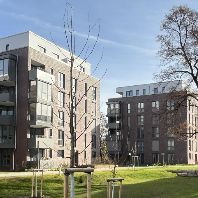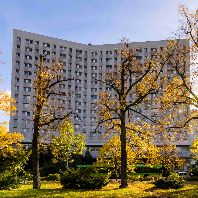In its latest research report, TH Real Estate offers a top-down view on the cycles and trends in commercial real estate in the US, Europe and Asia-Pacific so far this year. Based on its analysis of each region in a global context and using megatrend measurements, the firm also provides its predictions for H2 2016.
The report finds that US market conditions in early 2016 support expectations of continuing solid performance for the year ahead. The US economic growth of 2.1%, modest interest rate tightening by the Federal Reserve, solid commercial real estate returns, and attractive pricing, all support this prediction. With these positive metrics in place, the outlook for total returns in 2016 remains quite attractive and could come close to the long-term average.
High-quality regional malls, and affordable market-rate apartment’s standout as investment opportunities for H2 2016, according to TH Real Estate. Additionally, geographical locations with strong economies and liquid property sectors present opportunities, such as Seattle, Tacoma, Portland, Miami and Fort Lauderdale.
Martha S. Peyton, MD, head of research for TIAA Global Real Assets, comments: “The intensified volatility across global markets, including the economic weakening in China and associated distress in commodity-dependent emerging markets, roiled investor risk appetite, particularly in the opening months of 2016. At the same time, US real estate pricing changed very little, in part because the US is a safe haven for global investors. US economic growth is solidly positive with, we expect, continuing solid performance for the remainder of the year.”
According to TH Real Estate, European commercial real estate investment has seen a slowdown of activity in H1 2016. Debate exists as to how much this can be attributed to the fragile political back-drop and associated dampened economic growth forecasts, versus the present keen pricing in this cycle, but the firm does predict it sets the tone for near-term performance.
Despite the headwinds, the major economies of Europe are projected to record steady, albeit muted economic output. Benefitting from a low borrowing rate environment, robust income alongside good asset management will be important to drive future performance. In contrast to widespread cautious sentiment, Germany, the UK and Sweden have all recorded employment that exceeded pre-crisis levels, coupled with real wage growth and consumer spending in mainland Europe.
Mike Keogh, associate director of Research & Strategy, TH Real Estate says: “It would be naïve to underestimate the global economic headwinds in 2016, but it is also worth noting that the Eurozone grew 1.5% in 2015, well ahead of expectations at the start of the year, making it entirely possible that a similar situation could occur in 2016.“
The firm reports that opportunities may exist in good secondary assets in recovering occupier markets, particularly in Southern European economies which are higher yielding and have more potential for rents to recover. Markets that have fewer late-cycle symptoms include Southern Europe and “interesting” opportunities within Northern European cities.
TH Real Estate reports that Asia-Pacific is at a crossroads. After the global financial crisis in 2008, coordinated global monetary easing and expansive fiscal stimulus helped to invigorate domestic conditions, and revive industrial and export demand. This has also driven asset pricing to near-record-high levels. However, China is slowing, as policymakers try to engineer a managed soft-landing to allow an orderly deleverage from the high levels of debt that has accumulated, currently estimated at close to 300% of GDP.
Corporate and household sentiment has also been affected by the volatile financial markets and incrementally tighter US monetary policy. The outlook for Asia will likely be subdued in 2016 compared to preceding years above average growth. According to Oxford Economics, Asia-Pacific is projected to grow by 4.1% during 2016 and 2017, the sixth consecutive year of slowing since growth hit a peak of 7.6% in 2010.
There are value-add and opportunistic investments scattered across some markets in the region. Core-plus and value-add opportunities in Singapore suburban retail, Tokyo and Sydney Grade B office and uniquely defensive sectors, such as China Outlet Malls. Sydney, Melbourne, Tokyo office and retail sectors, and Singapore logistics all present good opportunities.
Harry Tan, head of research, Asia-Pacific, TH Real Estate adds: “Weakness in economic conditions will translate into softer real estate market fundamentals. This trend is already reflected in falling rents across some markets: prime retail and residential in Hong Kong and Singapore, where economic conditions have worsened over the past year.”















